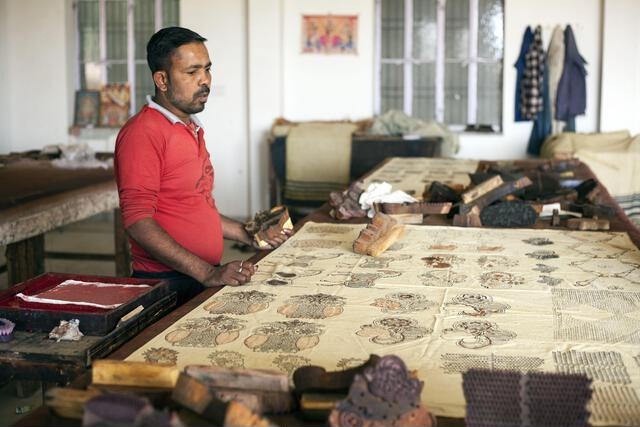Family of the last Multani block-makers continues to dispatch visual punch in Jaipur

Apart from Sanganer, which has long been a block-printing hub, Mashkur Ahmed Multani hails from one of the many families migrated from Multan around 300 years ago and started practicing the intricate art of block-making in Rajasthan.
Among the last of the Multanis in Jaipur involved in making wooden blocks used to print intricate patterns on fabric, 55-year-old Mashkur Ahmed Multani has been working from the age of nine, helping his father and grandfather craft these blocks.
Mohammad Rafeeq Multani, Mashkur’s 85-year-old father, recalled that before the 1990s, there were 10 shops of Multani block-makers in Purani Basti, inside the Walled City. Now, his shop is the only one that remains.

The story dates back to 300 years ago, when several families of ironsmiths left Multan (in present-day Pakistan), following their Sufi guru Hazrat Alauddin Hasan Rehmatullah Aliah, and settled in Sanganer, these families learned the most sought after vocation in the region which was to make wooden blocks used in textile printing.
According to the director of the Adivasi Academy in Gujarat’s Tejgarh, Madan Meena, who has studied the Multani block artisans, the community has been known as ‘Bhathkada’, where ‘bhath’ refers to the block designs.
As the demand for block printing has risen in tourism and textile emporiums,most of the Multani families have taken the profession more sincerely and they have been making jewellery based on block patterns in anticipation of tying up with established brands.

They have also started making jewellery such as rings, earrings, necklaces, and anklets with designs carved on wood which are sold well in exhibitions.
As per Multani family artisan, they make blocks and sell them to the Cheepa (a community of block printers) in Sanganer and Bagru. Both the towns have different art forms and motifs. Some block-makers were dedicated to Sanganer and some to Bagru. The method is similar, but the design is different
“Earlier they used to work on Gurjan and Saagwan wood, which are now banned. The wood used in making blocks has to be dried for at least a year in the dark because the rays of the sun crack it, noe they had to take special permission from the government to get more wood urgently.

The Cheepa community of block printers have resorted to hiring labourers from Farrukhabad in Uttar Pradesh to replace their services. “A Farrukhabad worker can prepare a block in a day. Most of the time, they do not work on dry wood and charge Rs 4,000 for an eight-inch block, for which a Multani charges Rs 12,000, informs.
The Farrukhabadi blocks are not as deep as the Multani ones. The quality of work of the Multani people is incomparable, but demand has increased and we had to find an alternative,” said Brij Ballabh Udaiwal, a Sanganeri block printer from the Cheepa community.
The introduction of screen printing has dealt another blow to block printing, but the grace of hand clock printing remains unimpeachable.

 Follow us on
Follow us on